Have you ever wondered what goes on in the bustling hubs where interactions with customers take center stage?
Let us begin with the basics. Shall we? An outbound call center is where agents make the first move, reaching out to potential and existing customers for various purposes such as sales, surveys, or lead generation.
On the other hand, an inbound call center is all about customers initiating contact, seeking assistance, support, or information from the experts on the other end of the line.
Now, what is the difference between inbound call and outbound call? The key lies in the direction of the communication flow. Outbound calls involve the call center initiating the conversation, while inbound calls are all about customers taking the lead.
Consider outbound as the proactive high achiever and incoming as the trustworthy troubleshooter always ready to lend a helping hand.
The services offered by each type of call center are tailored to cater to the unique needs of customers and businesses, with outbound contact center focusing on sales-oriented campaigns, while inbound call center services prioritize efficient issue resolution and customer support.
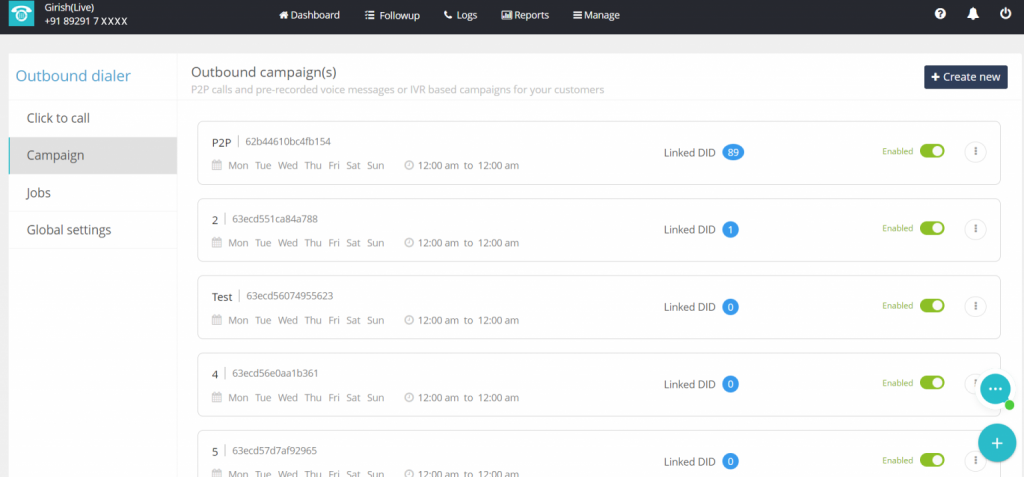
Understanding the strengths and limitations of both outbound calls and inbound calls is crucial for organisations seeking to optimise their customer service strategies and streamline their communication channels for enhanced business performance.
Why is Tracking Outbound and Inbound Call Center Statistics Important?
Monitoring call center statistics, both inbound and outbound call center, is critical to customer service and business operations. Call centers, both inbound calls and outbound calls, are separate entities with specific roles and goals. Gaining an understanding of the need to keep an eye on their individual statistics can be crucial to improving overall performance and accomplishing organisational goals.
Key Factors: Importance of Tracking Outbound and Inbound Call Center Statistics
1. Performance Assessment
Tracking statistics in both outbound and inbound call centers allows businesses to evaluate the efficiency and effectiveness of their customer service operations. For inbound centers, metrics like average response time and first-call resolution rate are indicative of their performance. In outbound centers, statistics related to call completion rates and lead conversion play a crucial role.
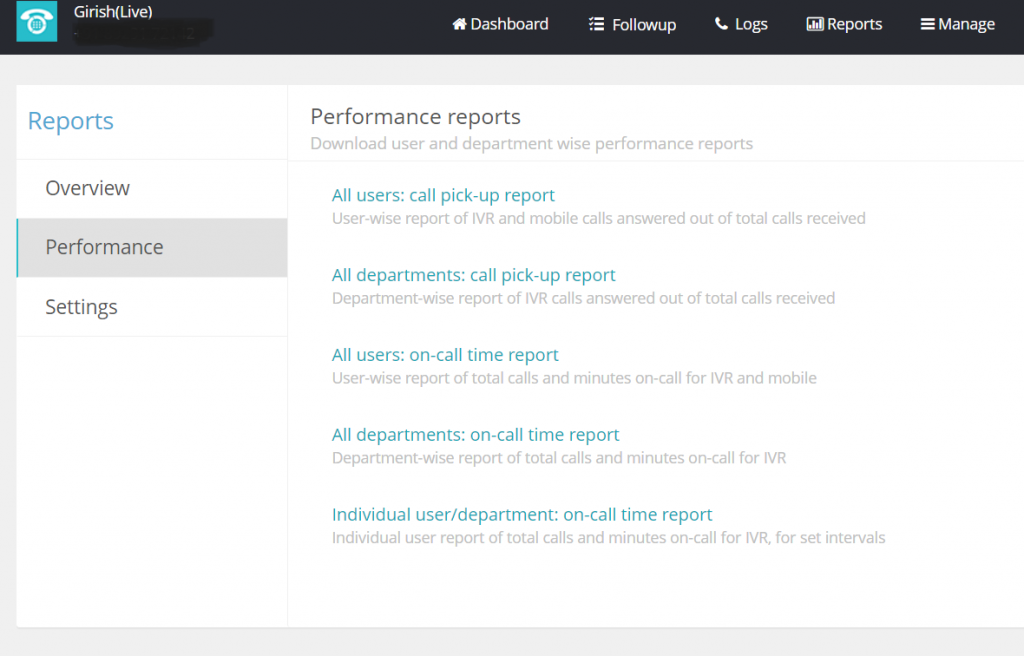
2. Optimising Resource Allocation
By monitoring call statistics, organizations can make informed decisions about staffing levels. For instance, an inbound call center might experience peak call volumes during specific times of the day, necessitating additional agents during those periods. In contrast, an outbound call center may want to adjust calling schedules based on response rates.
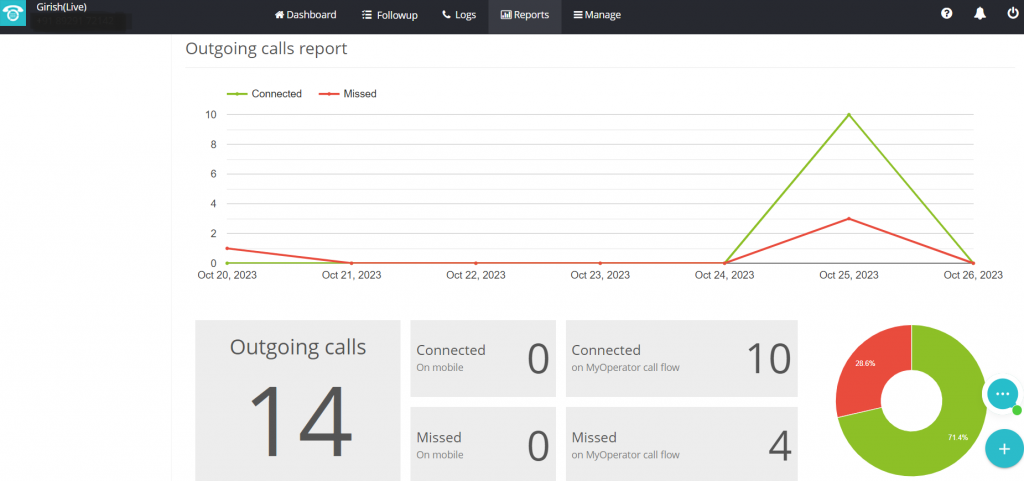
3. Enhancing Customer Experience
Inbound call centers need to ensure that customers’ issues are resolved swiftly and efficiently, as this directly impacts customer satisfaction. By tracking statistics, companies can identify areas where improvement is required, enabling them to enhance the overall customer experience.
4. Cost Management
For outbound call centers, tracking statistics can help manage costs associated with making calls, ensuring that resources are utilised effectively and minimising wastage.
5. Strategic Decision-Making
In the broader context of business strategy, the statistics obtained from both types of outbound and inbound call center services can help to make informed decisions on marketing strategies, product improvements, and customer segmentation.
Top Outbound & Inbound Call Center Statistics You Need to Know
While the specific key performance indicators (KPIs) may indicate the difference between inbound call and outbound call, certain universal statistics hold immense importance for both.
Let’s explore some of these top call center statistics:
For Inbound Call Centers
1. Average Response Time
This metric measures the average time it takes for a customer’s call to be answered. Shorter response times indicate better service.
2. First-Call Resolution Rate
The percentage of calls that are resolved on the first contact. A higher rate is a positive indicator of efficiency.
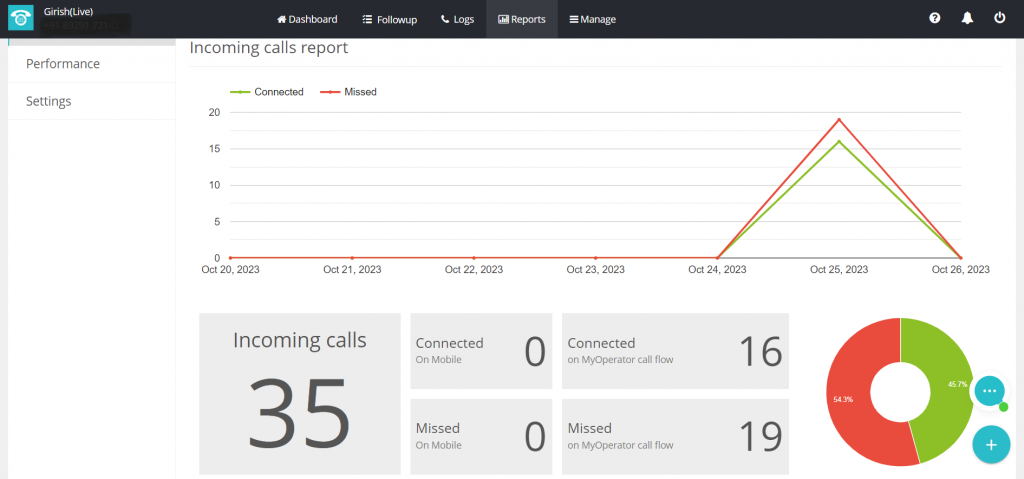
3. Customer Satisfaction (CSAT) Score
A customer’s rating of their satisfaction with the service received. High CSAT scores reflect contented customers.
4. Average Handle Time
This statistics measures the average time it takes for an agent to handle a customer’s inquiry. Balancing this time with quality service is crucial.
5. Abandonment Rate
The rate at which callers hang up before reaching an agent. A high abandonment rate may signal service issues.
For Outbound Call Centers:
1. Call Completion Rate
The percentage of calls made that successfully connect. A high completion rate is essential for lead generation.
2. Conversion Rate
The percentage of calls that result in the desired action, such as a sale or appointment. A higher conversion rate indicates effective outbound campaigns.
3. Dialer Efficiency
This statistic tracks how efficiently the calling system dials numbers and connects agents to live calls, optimising productivity.
4. Lead Response Time
The speed at which outbound agents follow up with leads. Faster response times often lead to better conversion rates.
5. Compliance Rate
Ensuring outbound calls adhere to legal and ethical standards is crucial. This metric measures compliance with regulations, reducing the risk of penalties.

Customer Statistics
Understanding customer statistics is critical for both outbound and inbound call centers, as it allows businesses to tailor their services to meet customer needs and preferences.
1. Customer Demographics
Gathering data on the age, gender, location, and other characteristics of your customers helps in creating targeted marketing campaigns and tailoring support services.
2. Customer Feedback
Collecting and analysing customer feedback provides valuable insights into their experiences, concerns, and expectations. This information is invaluable for process improvement.
3. Customer Retention Rate
The percentage of customers who continue to do business with your company over time. High retention rates signify strong customer relationships.
4. Net Promoter Score (NPS)
This metric assesses customer loyalty and willingness to recommend your company to others. A high NPS is indicative of satisfied customers.
5. Customer Lifetime Value (CLV)
Understanding the long-term value of a customer enables businesses to allocate resources effectively and focus on retaining high-value clients.

How Businesses are Improving Their Call Centers with Statistics
Businesses are transforming their call center operations through tapping into the power of statistics. Using statistical data allows businesses to track essential metrics such as call resolution time, customer satisfaction rates, and call abandonment rates in inbound call centers.
Statistics are useful in outbound call centers as well for tracking metrics such as total sales numbers, customer response rates, and call conversion rates.
With the use of these statistical insights, businesses may more effectively allocate resources, pinpoint operational bottlenecks, and improve customer interactions and efficiency.
Customer Segmentation and Personalisation
Companies can divide up their customer base into groups and tailor the call center experience to each group using data analysis. Businesses may personalise their services and communications to satisfy particular client expectations by knowing their preferences, behaviours, and needs.
Predictive Analytics for Customer Behaviour
Businesses use predictive analytics to anticipate customer behavior and trends. Businesses can plan for consumer preferences and proactively solve any difficulties by evaluating previous data and interactions with customers. This ends up resulting in a more effective and customized customer care experience.
Optimising Call Routing and Queuing
Call centers make use of statistics to optimise call routing and queuing strategies. Through the examination of consumer demographics, call volume trends and agent availability, businesses can establish intelligent call routing systems that connect consumers to the most suitable agents, resulting in shorter wait times and higher levels of customer satisfaction.

Agent Performance Assessment
To determine areas for improvement and to assess agent performance, call centers employ statistical analysis. Through the tracking of KPIs like call resolution rates, customer feedback, and script adherence, companies may offer agents focused coaching and training that improves their performance and skills.
Customer Analysis
To learn more about the interests and issues faced by their customers, businesses gather and examine consumer feedback via contact center interactions. Businesses can improve their products, services, and overall customer experience by using data-driven decision-making techniques such as sentiment analysis and voice of the customer.
Quality Assurance and Compliance Monitoring
Call centers employ statistics to keep an eye on and guarantee adherence to internal quality standards as well as legal requirements. Businesses can guarantee adherence to industry norms and organisational standards by identifying gaps and putting mechanisms in place to assure quality assurance assessments and data analysis linked to compliance.
Best Practices for an Outbound and Inbound Call Center
An organized and effective call center software is essential to contemporary business operations since it forms the basis for sales, customer interaction, and reputation management.
There is now a wide range of best practices for both inbound and outbound contact centers attributed to the combination of the latest technology and efficient operations. Improving performance and satisfying customers requires utilising the appropriate inbound call center software, and outbound call center software. Let us explore some of the best practices in a more comprehensive manner.
1. Embrace Cloud-Based Outbound Call Center Solutions
Utilising a cloud-based platform, such as the one provided by MyOperator, offers an array of benefits for outbound call centers. These include the ability to operate remotely, manage large call volumes with ease, and leverage the flexibility of click-to-call dialers and smart follow-ups.

By integrating outbound call center software into the daily operations, sales teams can efficiently build and nurture relationships with prospects, convert leads into customers, and conduct surveys or telemarketing activities.
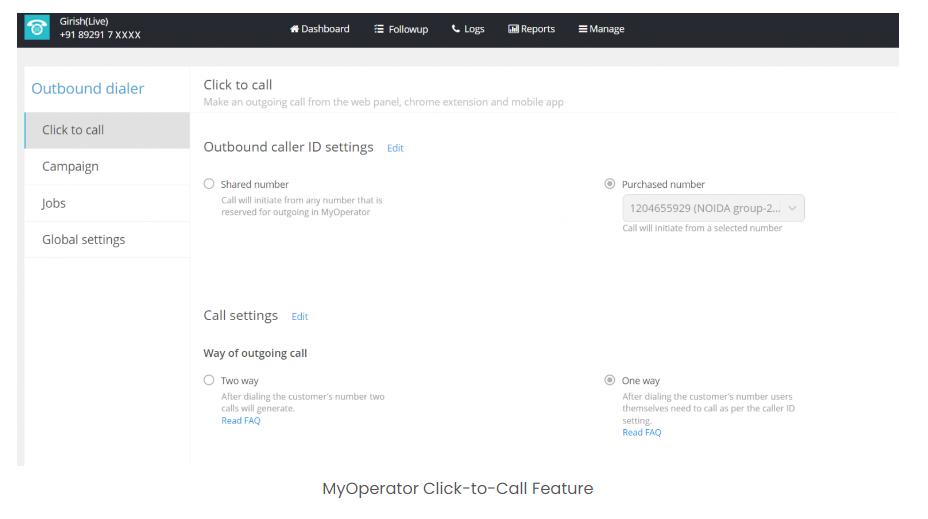
2. Seamless CRM Integration
The integration of Customer Relationship Management (CRM) software allows for a personalized calling experience, which is crucial for effective customer engagement.
By leveraging MyOperator CRM integration, outbound call centers can access customer data, history, and preferences, enabling agents to tailor their approach, improve productivity, and foster long-term customer loyalty.
3. Prioritise Customer Engagement in Inbound Call Centers
Recognising the significance of inbound call centers, it is crucial to invest in a reliable inbound call center software that can handle multiple calls simultaneously from any location.
The deployment of cloud based contact center solutions ensures quick and hassle-free setup, allowing businesses to promptly attend to customer queries and concerns, thereby increasing customer satisfaction and loyalty.

4. Improve Accessibility and Responsiveness
Since a large percentage of consumers prefer to communicate with businesses over the phone, it is essential to integrate inbound call center solutions.
By ensuring seamless accessibility and prompt responses to customer queries, businesses can foster a customer-centric approach, leading to increased customer satisfaction, improved brand impression, and ultimately, heightened sales and profitability.
5. Strategic Outbound Calling Approach
Implementing a well-defined outbound calling system strategy is imperative for converting leads into customers.
With the aid of modern outbound telemarketing software, sales teams can efficiently prioritise and segment leads, initiate follow-ups, and customize communication based on customer preferences.
Such customised strategy raises the chances of effective lead conversion and retention while also improving the entire customer experience.
5 Ways to Strengthen Your Outbound and Inbound Call Center Services
- Identify performance gaps: Analyse stats for improvements like call abandonment, long call times, or low resolution rates.
- Targeted agent training: Use stats to identify agent training needs in areas like listening and product knowledge for better service.
- Optimise workforce management: Adjust staffing and schedules using stats on occupancy, call volumes, and wait times to reduce customer wait times.
- Embrace technology: Use AI chatbots and speech analytics for insights and to handle routine inquiries.
- Foster continuous improvement: Regularly review statistics and feedback, encourage learning, and open communication for better processes.
Pro tip- Enhance self-service: Use statistics to improve self-service options with IVR systems and knowledge bases.
Future Call Center Trends to Look Out For
The following significant cloud call center technology trends are expected to have an important impact on the call center solution industry in the near future:
1. Increase in Voice Assistant Adoption
According to predictions, 8.4 billion voice assistants will be in active use globally by 2024. The increasing popularity of advanced technologies including machine learning (ML) and natural language processing (NLP) will be the primary source of this surge.
Predefined welcome voice messages are available on MyOperator, along with the ability to add new audio and play it back for testing.
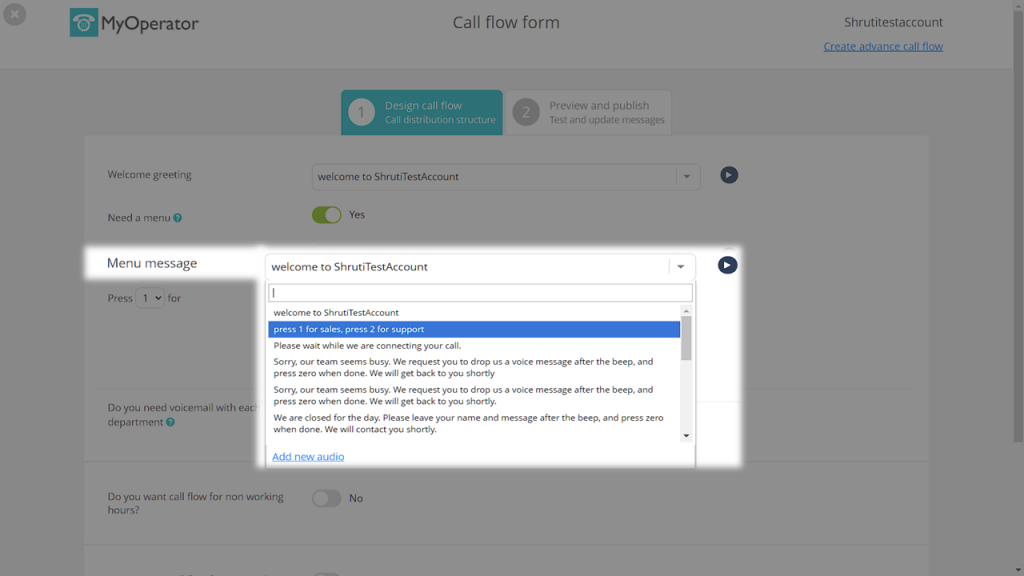
These voice assistants’ incorporation into business procedures will make it easier to offer consumers effective self-service options on a large scale. Did you know? At Myoperator you get the feature to record voice messages from a voice artist.
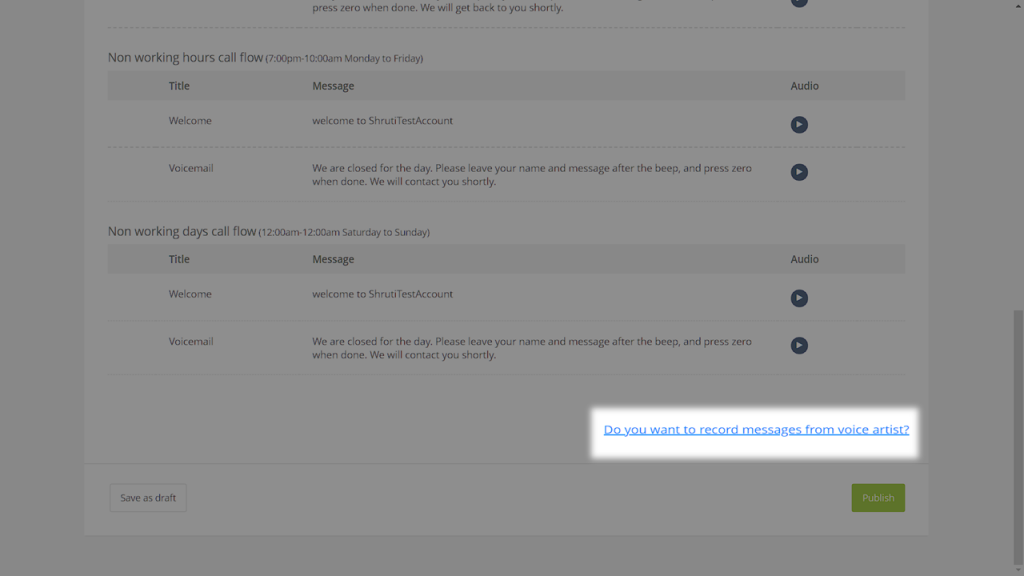
2. Virtual Contact Center Emergence
Cloud contact center solutions are expected to continue to gain traction in the call center business, with an estimated $82.43 billion in total value by 2030.
The increasing need for scalable cloud software contributes to this significant shift toward Contact Center as a Service (CCaaS) solutions. As a result, enterprises are likely to be providing better, more manageable customer experiences, which will promote smooth and effective operations.
3. Focus on Omnichannel Customer Engagement
Studies show that the market for omnichannel customer engagement will generate a sizable $17.92 billion in revenue by 2030.
This growth suggests that networked customer interactions across several platforms are becoming increasingly important. This strategy enables consumers to interact with the brand consistently, individually, and comprehensively while navigating between various communication channels.
To Sum Up:
Tracking outbound and inbound call center statistics and customer statistics is indispensable for any organisation aiming to deliver outstanding customer service, improve operational efficiency, and drive business growth.
The choice between an inbound or outbound call center depends on the specific goals and needs of the company, and both have their own merits when managed with careful attention to key performance indicators.


